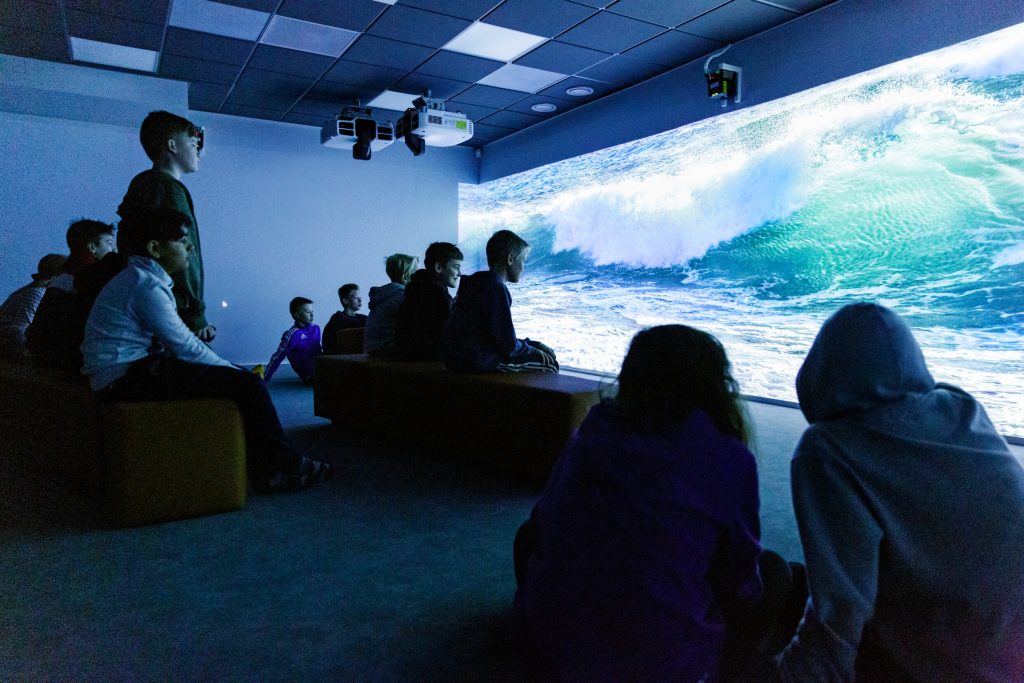
Media
Nature experiences can also be gained digitally. The media, and the online world in particular, offer good ways of educating and influencing the environment for youth work.
With the Internet, the globe has seemed to shrink as human connections have increased and intensified. We can follow events on another continent in real time and take part in a joint environmental tour at the same time as young Australians.
Photography as a hobby has increased and images have been shared on social media. Young people also share a lot of their own videos. It also makes sense to use this in environmental education. Nature photography is of interest to many, and even an amateur photographer can gain hundreds of thousands of followers by sharing their images on Instagram.
According to ecopsychologists, natural experiences brought into the interior can be invigorating and soothing, although their effectiveness is weaker than experiences in the middle of nature. You can build a new kind of nature connection by exploring the world with the help of webcams or by watching super cute cat videos
1. A close relationship with nature: Atmosphere
- Decorated with nature pictures
Let’s look, with the young people, on the Internet for what they think is great, and print them out to put up on the walls, especially in places where peace and quiet is needed. Be sure to check the image copyrights.
Pixabay
seppo.net - Experiential nature evening
at a youth centre. If one does not get out into nature, nature can be brought inside. We gather all the green plants in one place into a jungle or paradise, decorate the space, dim the lights and put the sounds of nature in the background. Feeling, chatting and eating “original” food: seeds, fruits, roots, birch sap (sold in eco-shops), etc. By nature, it’s easy to combine a visual arts workshop, a natural music workshop or some other theme. naturesoundsfor.me - A trip to Niagara Falls and a bear’s den
Make virtual trips to the ends of the earth to stunning natural sites via the Internet, and monitor bird nesting, the life of a lynx, or a bear hibernating in real time. Niagara falls - Nearby park in the 16th century
Research the past of your own neighbourhood through the district association’s website. What’s special about what happened in your neighbourhood a long time ago?
2. Environmental deeds: Things to do together
- An energy review of the youth centre will be carried out with young people and development targets will be decided.
An estimate of the annual consumption of operating electricity can be made with the youth services’ own electricity meter, which you can order from the Meriharju Nature House. You can also get guidance from the same place! - Let’s take a stand for the environment through online addresses, campaigns and newspaper articles.
- Hosted from YouTube platforms where environmental videos are watched. Let’s discuss how one’s own actions and choices affect the other side of the world. Are we somehow involved in the video events? Should something be done? Why?
- Participate in the recycling of books around the world through Book Crossing pages
- Partivipate in the global Earth Hour event
- Check out online recycling sites and rental services
- Run your own anti-ad campaign Älä osta mitään- Don’t buy anything at the end of November.
- Let’s calculate our climate weight with an online counter and think together about how each of us could reduce our own footprint.
- Reserve a place on the bulletin board for just good environmental news found in the media. If you want, you can also have a disaster department next to the good news.
3. Own inspiration: Ideas and information
- In the media and online, interactions and dependencies between people appear differently than in other areas of life. Indeed, the Internet can be used as a good trigger for a debate on the interactions between everything living and non-living on Earth. What things connect man to the rest of the world: seas, rocks, plants, animals, other people?
- The Internet has made many things easy and fast. Consider how such fast and frequent connections improve the quality of life. Does the same thing happen in nature?
- How does a virtual experience differ from a face-to-face one? What would it be like to live in isolation on a desert island? What would be good and what would be bad?
- Let’s discuss how dependent we are on information technology and the Internet and in what areas of life we could reduce that addiction. What would be the environmental impact of data network crashes?
- Consider what life is. Whether a virus or worm spreading on computer networks is alive. What is consciousness? What is existence virtually? What about the real world?
- We use eyeglasses without any weird ethical consideration, but could we take computer chips into our brains?
- Is online land cultivation gardening or something else?
- Monitoring media communication during and after an environmental disaster. What are the differences between different media? How does real-time communication feel? mediakasvatus.fi
